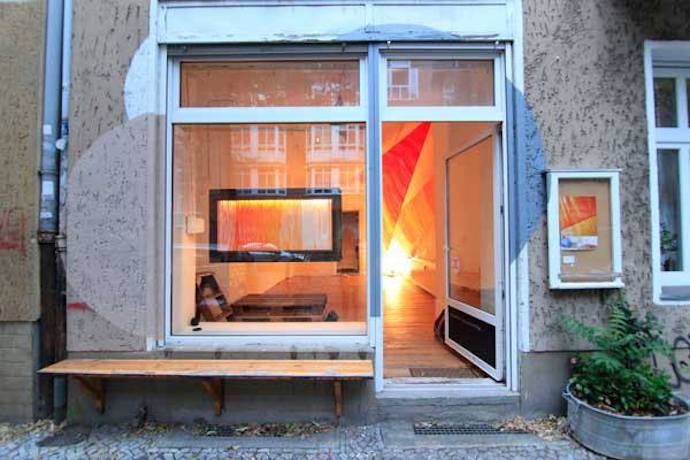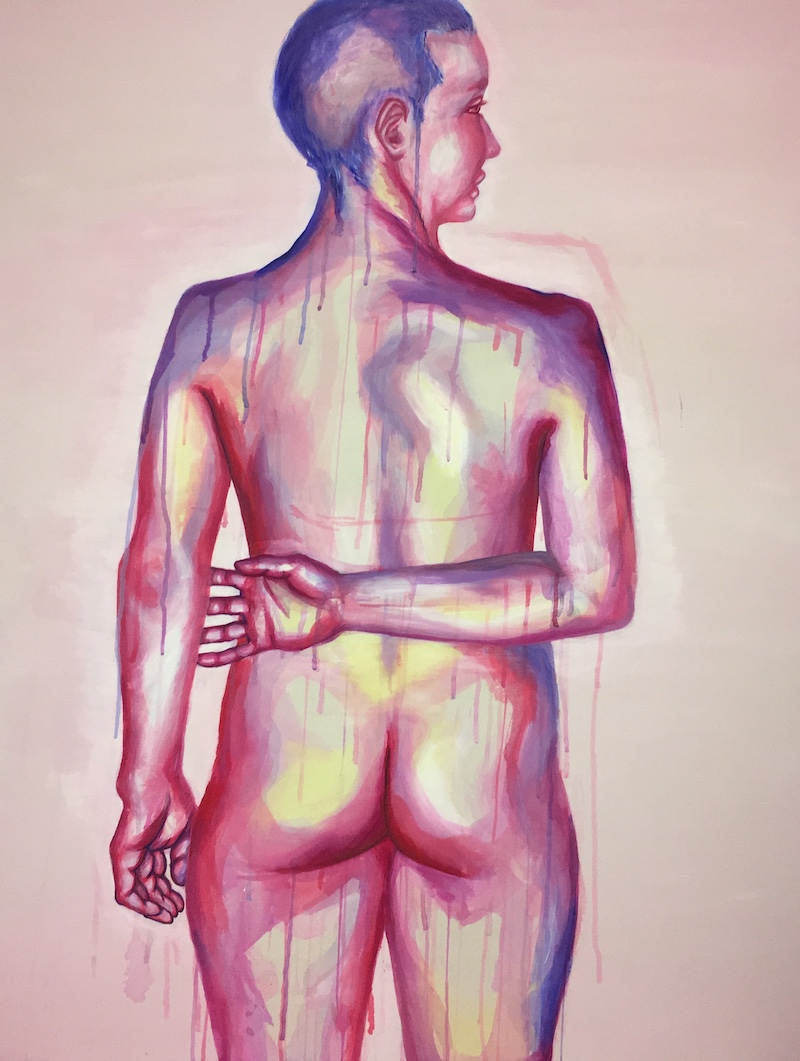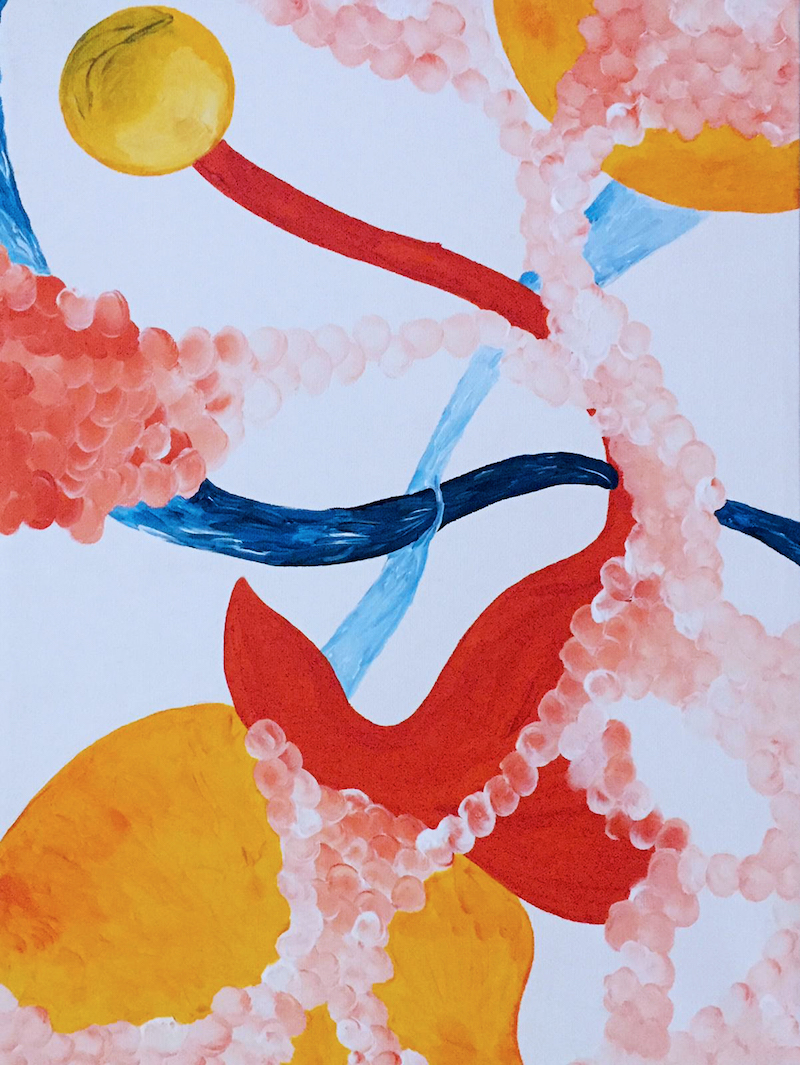by Elizabeth Schippers // May 22, 2020
Studio Baustelle has opened its online show ‘Nebulous’, a group exhibition that explores our relationship with our body and the way it is apprehended and depicted. The word nebulous—the cloud-like quality from which the exhibition takes its name–here suggests the hazy boundaries and vague areas between our body as it appears in the world and in our psyche. The show, curated by Lindsey Dodge, includes 31 artists who are residents of Berlin and who have a focus on the figure in their practice. With an assemblage of artists from a myriad of different communities, genders, sexualities and life experiences, this exhibition reflects on the different ways and attitudes with which we consider bodies.

Exterior view of Studio Baustelle, Neukölln
Studio Baustelle is a non-commercial gallery and project space in Neukölln. The studio space is run by a collective of five artists who manage the gallery, curate the exhibitions and run various workshops and events. With the current pandemic preventing most events and exhibitions from taking place, the gallery has decided to move the exhibition online. The online exhibition includes a “gallery view,” in which the pictures can be expanded to look up close, as well as artist statements and a short artist bio for all the artists included in this exhibition.
When clicking on the “gallery view” option, the screen of my laptop leads me to the first artwork one encounters when entering the exhibition. ‘Unicorns are Real’ by Wafa Ben Romdhane (aka WAF) is a six-minute-long video depicting a performative exploration of the boundaries of the body. Distorted shadows of bodies pressed through a transparent cloth fill my screen while slightly ominous music with heavy bass blasts through my laptop speakers. The bodies grasp at the cloth, searching to disrupt its tension, while simultaneously playing with the distortion the shadows provide of their bodies. The video also portrays various scenes that are reminiscent of the process of chest binding, exploring the constricting and liberating processes inherent in this practice. In her artist statement, WAF explains that this work is about “creating a temporary safe space for Tunisian queer people to express themselves about their body awareness and the sense of boundaries. Then try to overpass the limits of social rules conditioning gender by the transfiguration of their ideas of self in a performative way.”
A lot of artists included in this exhibition focus on the relationship between the body and psyche, particularly as it relates to gender and sexuality. Emma Weird works with bold colours and still-dripping acrylics in their paintings of the nude body. ‘I AM 10.0’ depicts a nude body viewed from behind. The right hand lightly touches the left arm and the face, drawn in profile, looks off in the distance. The position of the body puts into question the nude as it is generally portrayed in art, where the body is viewed as primarily sexual and subjected to the rigid binary of “woman” or “man”. In this piece, Weird examines the tangled and fuzzy threads that connect our identity to our nude bodies. The relationship between bodies and identities is often a very complicated one, especially as one transgresses old binaries and ventures into exciting but lesser known territories. Weird works to highlight these transgressions and elevate queer beauty.

Emma Weird: ‘I AM 10.0,’ Acrylic on canvas, 86 x 114 cm // Courtesy of the artist
The nebulous boundaries between the body and the psyche are furthermore deconstructed by diving deeper, past the layers of skin and flesh, to reach the perspective of the psyche. With ‘Clitoral,’ Charlotte de Bekker examines the body from within. The work is representative of the sensations of specific parts of ourselves, isolated by means of mental body-scans. This piece depicts a relearning: as someone who experiences dissociation often, de Bekker had to teach themself how to connect back to their body using a variety of techniques, including meditations that focus on the apprehension of the body. Indeed, de Bekker here takes a very personal approach to the theme of this exhibition and examines their own body, as observed from within, through re-grounding techniques. Using these techniques, de Bekker singles out specific areas and depicts the sensations that they experience with colourful acrylics. The paintings are built up with fluid and round shapes, without any sharp corners or abrupt breaks. These rounded shapes work to represent the energy flowing through the body, not only as it currently swirls around the interior, but also as an imaginary plane on which de Bekker projects their body in its potentiality.

Charlotte de Bekker: ‘Clitoral,’ Acrylic on canvas, 30 x 40 cm // Courtesy of the artist
‘Nebulous’ provides a space for artists coming from various backgrounds to articulate their interpretation of the body-mind relationship by means of a variety of different mediums. Although the laptop screen creates an unwelcome barrier between the viewer and this intimate subject matter, Studio Baustelle has done a great job in creating an accessible and enjoyable exhibition. The variety in viewing options, as well as the extensive information provided on each piece and every artist, definitely makes for a worthwhile digital visit.
Exhibition Info
STUDIO BAUSTELLE
Group Show: ‘Nebulous’
Exhibition: May 15–30, 2020
Online Viewing, click here























